

Table of contents
- Wall paint dries so quickly
- Other influencing factors
- underground
- temperature
- room humidity
- accelerate drying
- Second coat of paint of the same color
- Second coat in a different color
- frequently asked Questions
Most rooms in the house are used daily. When the walls get a new coat of paint, everything has to happen quickly. But furniture and pictures can only take their old place on the wall when everything is finished. But how long does the wall paint need to dry?
Wall paint dries so quickly
Various products are available on the market for painting walls, which differ not only in color but also in composition. For example, there are oil-based paints and those that are water-soluble. The composition has a decisive influence on the drying time of the wall paint.
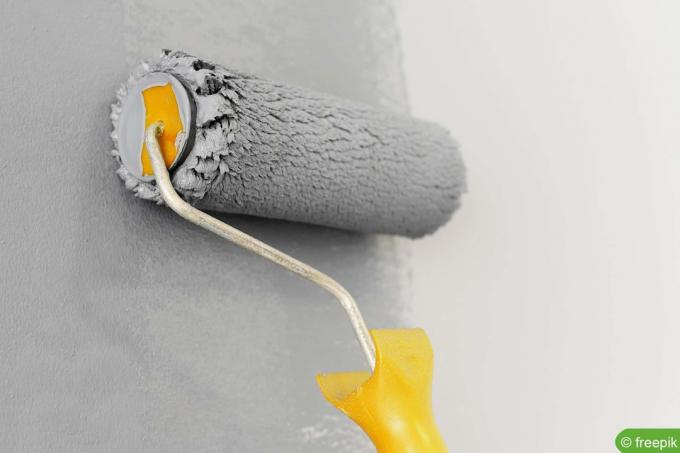
On average, it takes around 12 hours for an applied wall paint to dry completely. But it's best to look at the packaging for the manufacturer's information about the drying time.
Other influencing factors
Three factors have a decisive influence on how quickly a coat of paint dries.
underground
If the surface is absorbent (absorbent), the paint will dry faster. This is the case, for example, with concrete and drywall. If there is already a layer of paint, you must assume reduced absorbency. The newly applied paint will dry more slowly accordingly.
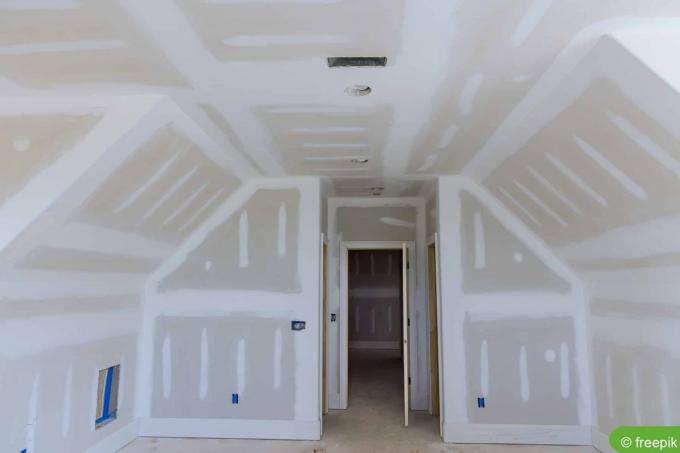
Tip:
Take a closer look at old paintwork. Very old colors can often not be painted over at all or only with several coats of paint, which is very time-consuming. It may make more sense to completely re-paper the room.
temperature
Wall paints dry best when the temperature in the room is between 20 and 25 degrees. If it is colder, the drying process is significantly slower. Not only that, with some colors it can happen that the paint finish tears. With water colors there is a risk of tearing at warmer temperatures.
room humidity
The air in the room removes moisture from the applied paint, which causes it to dry. If the absorbed moisture cannot escape to the outside, the drying process is slowed down. Because the more humid the air, the less moisture it can absorb.
accelerate drying
Drying can be accelerated in two ways: by increasing the room temperature and by reducing the humidity.
- air after painting
- set up a small heater
- set up a breather
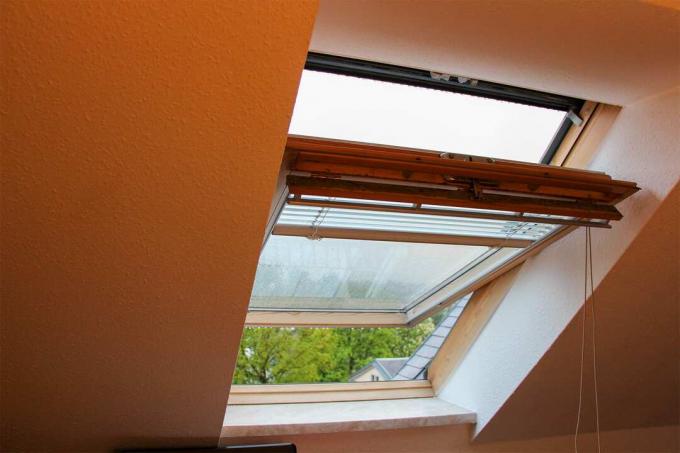
Tip:
Do not overdo it by influencing the drying process, for example do not place the fan heater too close to the wall. Because if the wall paint tears, you have to repair the damage at great expense.
Second coat of paint of the same color
The second coat of paint must not be applied directly to the first, that much is clear. But how much time must elapse between How dry the paint that has already been applied first needs to be is not so easy to give a general answer. The paint manufacturers sometimes give very different information, which are certainly well justified. Even if the paint does not have to be completely dry for the second coat, stick to the specified time to be on the safe side. In general:
- wait until color is no longer shiny
- commonly used emulsion paints dry comparatively quickly
- they can usually be painted over after just five hours
Second coat in a different color
If you paint a wall that is still damp from the first coat of paint with a paint over another color, unwanted mixing can occur in places. Therefore, the second coat of a different color may only be applied when the first coat has completely dried. Since the drying time depends on various factors, it doesn't hurt to build in a safety buffer and only paint the next day.

Tip:
Sometimes a freshly painted wall looks completely dry when it isn't. Check this before painting by gently touching the wall with your fingertips. If it's still wet, you're guaranteed to feel it. some paint will stick to your fingers.
frequently asked Questions
In order for a newly painted room to be cleaned and arranged, the paint does not have to be completely dry. However, you should first set up furniture with a little distance and only push it close to the wall when the paint is completely dry. This also applies to hanging pictures. Carry out all movements carefully so that you do not touch the still damp wall.
Viscous and thin-bodied paints are referred to as emulsion paints, but they can have different compositions. Among other things, they are considered low-odour, good coverage, paintable, abrasion-resistant and quick-drying.
The hair dryer can generate intense heat at the highest level. This in turn will cause the paint to crack. You can definitely use the hair dryer in places, but then very carefully. Set the lowest level and don't hold it too close to the wall.
 Maike
Maike
Learn more about paints & varnishes

Cream-colored kitchen: which wall color fits?
If you own a cream-colored kitchen, you don't have to despair with the wall colors. There are numerous shades that go wonderfully with the interior, underline it or create an attractive contrast. We introduce you to 30 wall colors that match the kitchen.

White kitchen: these 30 wall colors match
A white kitchen is the ideal basis for numerous wall colors. They are either selected individually according to your own taste or to match the design of the kitchen. Even combinations are possible. We introduce you to 30 wall colors that match white kitchens.
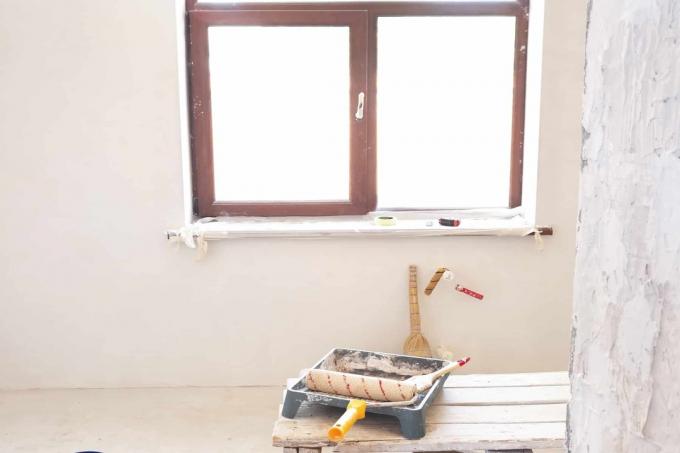
After painting: ventilation and windows open or closed?
Should you ventilate while painting or only after painting? The answer to this question is more complex than expected. This guide shows what determines whether the windows should be open or closed.
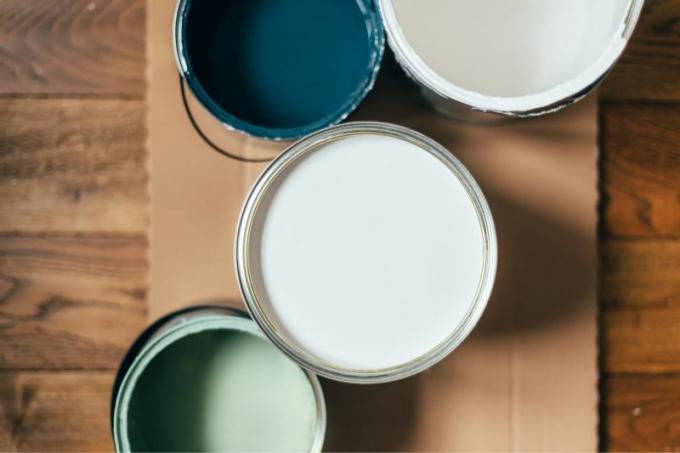
Dilute wall paint without losing opacity
Opacity is an important factor when using wall paints. Emulsion paints in particular are known for their good covering power, but they are sometimes too viscous or sticky to apply. For this reason, it is important to properly dilute wall paint.

Dispose of wall paint: where and how much does it cost?
Under the appropriate conditions, wall paint can be disposed of in various ways. Because in liquid form, paints are so-called problematic substances that can harm the environment. We will tell you where you can dispose of wall paint and what the costs are.

Processing epoxy resin: basics for processing
Epoxy resins have proven themselves as materials and have become indispensable in many areas. Above all, their extraordinary adhesive and sealing function is valued. In order for this to work, the resin must be mixed and processed correctly. More on the basics is here.



